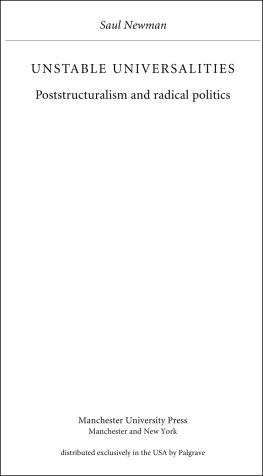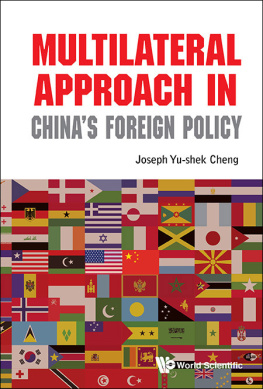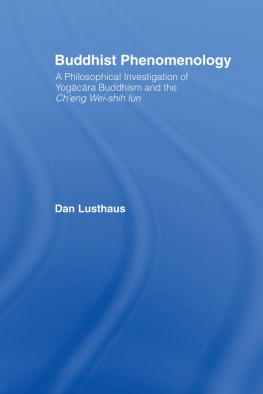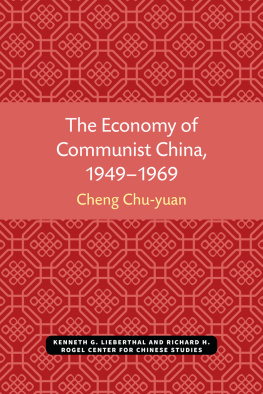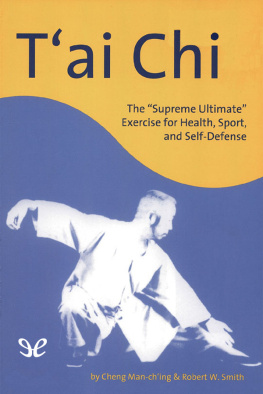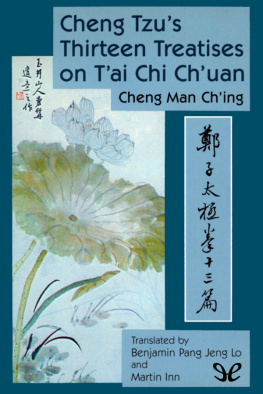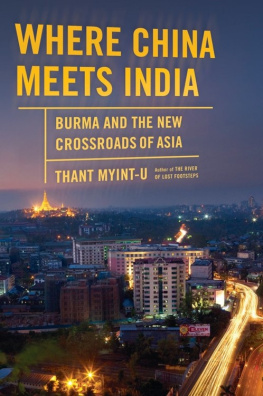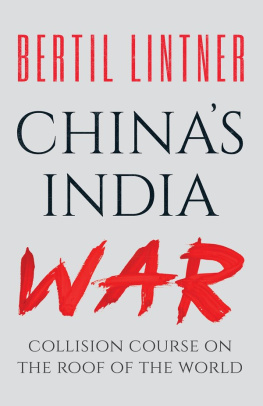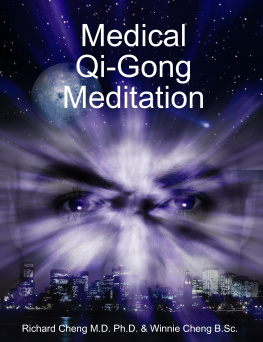Anne Cheng - India-China: Intersecting Universalities
Here you can read online Anne Cheng - India-China: Intersecting Universalities full text of the book (entire story) in english for free. Download pdf and epub, get meaning, cover and reviews about this ebook. year: 2020, publisher: Collège de France, genre: Religion. Description of the work, (preface) as well as reviews are available. Best literature library LitArk.com created for fans of good reading and offers a wide selection of genres:
Romance novel
Science fiction
Adventure
Detective
Science
History
Home and family
Prose
Art
Politics
Computer
Non-fiction
Religion
Business
Children
Humor
Choose a favorite category and find really read worthwhile books. Enjoy immersion in the world of imagination, feel the emotions of the characters or learn something new for yourself, make an fascinating discovery.
- Book:India-China: Intersecting Universalities
- Author:
- Publisher:Collège de France
- Genre:
- Year:2020
- Rating:5 / 5
- Favourites:Add to favourites
- Your mark:
- 100
- 1
- 2
- 3
- 4
- 5
India-China: Intersecting Universalities: summary, description and annotation
We offer to read an annotation, description, summary or preface (depends on what the author of the book "India-China: Intersecting Universalities" wrote himself). If you haven't found the necessary information about the book — write in the comments, we will try to find it.
India-China: Intersecting Universalities — read online for free the complete book (whole text) full work
Below is the text of the book, divided by pages. System saving the place of the last page read, allows you to conveniently read the book "India-China: Intersecting Universalities" online for free, without having to search again every time where you left off. Put a bookmark, and you can go to the page where you finished reading at any time.
Font size:
Interval:
Bookmark:

- DOI: 10.4000/books.cdf.6183
- Publisher: Collge de France
- Place of publication: Paris
- Year of publication: 2020
- Published on OpenEdition Books: 9 April 2020
- Serie: Institut des civilisations
- Electronic ISBN: 9782722605367

http://books.openedition.org
CHENG, Anne (ed.) ; KUMAR, Sanchit (ed.). India-China: Intersecting Universalities. New edition [online]. Paris: Collge de France, 2020 (generated 14 avril 2020). Available on the Internet: . ISBN: 9782722605367. DOI: https://doi.org/10.4000/books.cdf.6183.
Collge de France, 2020
Terms of use:
http://www.openedition.org/6540
This collection of articles is mainly the result of an international conference organised by the Chair of Chinese Intellectual History at the Collge de France in June 2017. Entitled India-China: Intersecting Universalities, it brought together scholars from Asia, America and Europe who have been interested in one aspect or other of the cultural interactions between India and China. The diversity of the topics testifies to the lively interest raised by the intersection of two heavyweights of area and cultural studies. What makes the relationship between China and India so remarkably interesting is that one can hardly imagine two civilisational worlds as radically different from each other, which yet managed somehow to come into contact and to interact. The aim of the present volume is to look at various aspects of the cultural exchanges between India and China at different points of history. It is to try and remedy a certain indifference and mutual ignorance in our day and age that we bring forward this collective venture with the hope of offering to our readers alternative approaches to the connections between these two giants of Asia, other than the merely geopolitical ones that fill our media today.
Anne Cheng holds the Chair of Chinese Intellectual History at the Collge de France in Paris. Born to Chinese parents, she was educated in France, studying classics and European philosophy before focusing on Chinese studies. For over forty years she has been involved in teaching and research on the intellectual history of China. She has translated the Analects of Confucius into French, and has written a study of Han Confucianism, as well as a history of Chinese thought which has been translated into numerous European and Asian languages. She has also edited several joint publications and is the chief editor of a bilingual series of works written in classical Chinese at Belles Lettres.
Sanchit Kumar was educated at Jawaharlal Nehru University, New Delhi. He also attended Sciences Po Paris, National University of Singapore and E.H.E.S.S. (School of Advanced Studies in Social Sciences) in Paris. He has collaborated with researchers at Harvard University, University of Tokyo and Collge de France. His recent interests are in intercultural, and more specifically, inter-Asian studies.
Cover illustration: mural painting from Mogao cave #103, Tang period, Dunhuang (Gansu, China).
Illustration de couverture : peinture murale provenant de la grotte bouddhique de Mogao n 103 d'poque Tang, Dunhuang (Gansu, Chine).
This collection of articles is partly the result of an international conference organised by the Chair of Chinese Intellectual History at the Collge de France in June 2017, which has benefited from the scientific collaboration of Mr. Sanchit Kumar, the technical contribution of Mr. Jean-Michel Roynard, and the financial support of the Fondation Hugot du Collge de France. The conference, entitled India-China: Intersecting Universalities, came after a first one, held two years earlier and entitled Intellectual Encounters between India and France, 17th-19th centuries. The 2017 session brought together scholars from Asia, America and Europe, who have been interested in one aspect or other of the cultural interactions between India and China. For various reasons, some presentations made at the conference have not been turned into written papers, while some articles integrated in this volume have not been presented at the conference. However, the diversity of the topics treated both in oral and written forms testifies to the lively interest raised by the intersection of two heavyweights of area and cultural studies. China and India have already been explored in depth by major scholars whose works are cited and referred to throughout this volume .
One may wonder, however, why a chair dedicated to Chinese studies should have been tempted to look towards India, which is to say the least another huge field of research. At a time when China is widely (and wildly) assumed to be on the rise and looms large, not to say threatening, in the global picture, it has been our firm and long-standing conviction that it is more than ever necessary to stop considering it as a self-contained and self-sufficient entity, and to place it within a regional context by taking into account its historical relationships with its equally influential neighbours, be it Japan, South-East Asia or India.
What makes the relationship between China and India so remarkably interesting is that one can hardly imagine two civilisational worlds as radically different from each other, which yet managed somehow to come into contact and interact. One should naturally be aware from the very start that both China and India are problematic denominations at any point in time before their modern transformation into nation-states. These terms are here used to designate two vast areas of civilisation on either side of the Himalayas, the contours of which kept fluctuating over the centuries but between which there has been a constant circulation of people and ideas. The first and foremost case that readily springs to mind is the vast overhaul of Buddhism from India to China over the first millennium of the Common Era, which implied a massive and unprecedented effort of translation of Buddhist scriptures and literature into Chinese. However spectacular and grandiose as this process might appear in retrospect, it would certainly be naive to believe in the simplistic and reductive narrative of two great and ancient civilisations coming either into direct contact or just through a single defining moment.
The aim of the present volume is to look at various aspects of the cultural interactions between India and China at different points of history which may be roughly distributed into two large periods: first, the period running from the early centuries of the Christian era, when Indian Buddhism started seeping into the Chinese soil, down to early Tang times (7 th -8 th centuries), when Buddhism can be said to be transferred from India to China. The second period takes the story into much later times, from the late 17 th to the early 20 th centuries, when India came under British rule while China came under Manchu rule. The volume therefore does not claim to cover the whole ground, nor does it claim to break new grounds, the main purpose being to envisage China as integrated in a larger vista and landscape.
Font size:
Interval:
Bookmark:
Similar books «India-China: Intersecting Universalities»
Look at similar books to India-China: Intersecting Universalities. We have selected literature similar in name and meaning in the hope of providing readers with more options to find new, interesting, not yet read works.
Discussion, reviews of the book India-China: Intersecting Universalities and just readers' own opinions. Leave your comments, write what you think about the work, its meaning or the main characters. Specify what exactly you liked and what you didn't like, and why you think so.


